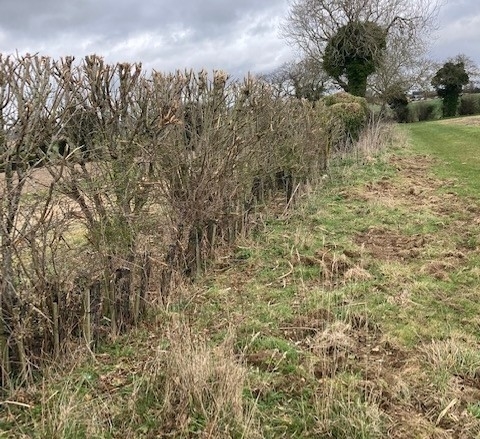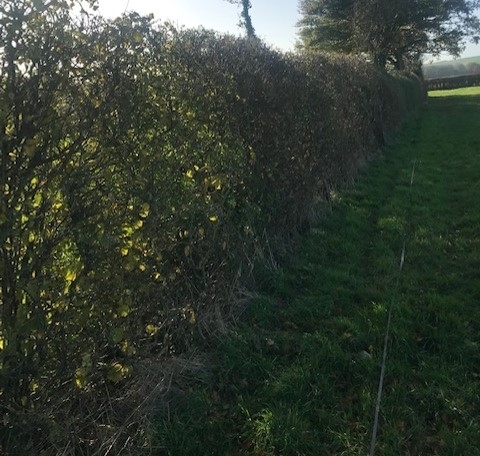Written by Katie Holmes. Katie is studying Ecology and Conservation and has been working in the Lowland Gamebird Research team during her placement.

During my placement year with the lowland game department I have been given the opportunity to carry out my own project. As there are many hedges along the transects we have been working on, and as I have always been curious about what plants make up a hedgerow and what life is hidden within them, l chose to delve deeper!
In the UK, most land is used for agriculture. In these often-large monoculture crop fields there is not much diversity in the plant life. But hedgerows and field margins can provide more diversity and species richness in farmland flora and fauna. Hedgerows are vitally important for wildlife as they provide food, shelter and nesting habitat for many species, some of them endangered, such as dormice, hedgehogs, and many species of butterflies and birds. This is why I find hedgerows so fascinating and think that they are a crucially important farmland habitat.
In my project I am looking to answer the question: Does the releasing of game birds and the associated management have an effect on hedgerow structure and woody species diversity?

To collect my data, I visited each of the 18 study sites (10 of which release gamebirds and 8 sites that do not). I walked a three kilometre transect. As I walked, I mapped out which field edges had hedgerows. Later, I randomly selected and measured out three 30m sections of hedgerow on each of the study sites. I then counted and identified all of the woody species in each section, gave the hedge a shape rating using a hedgerow shape and structure key, estimated the gappiness and counted the number of standards (free-standing trees) present in the hedge. I conducted this data collection between November and February as I was focusing on the woody species and structure of the hedge. Surveying in the winter meant I could clearly see the structure and less dominant species which may be hidden when the hedgerow is in full leaf. Plant life has always interested me and this project has helped me to improve my identification skills. I found it a bit of a challenge at the start of the surveys to identify some of the tree species as in winter, they had no leaves. However, with the help of identification apps, my tree guide and my knowledgeable and experienced colleagues, my winter twig ID skills have definitely improved.

I found a wide range of hedgerows whilst collecting my data. Some hedges were bare and gappy and others amazed me with how many species they contained: blackthorn, hawthorn, hazel, dog wood, field maple, elder and many more. One hedgerow had 11 woody species within a 30m transect! I am looking forward to analysing my data to discover the findings of my project.